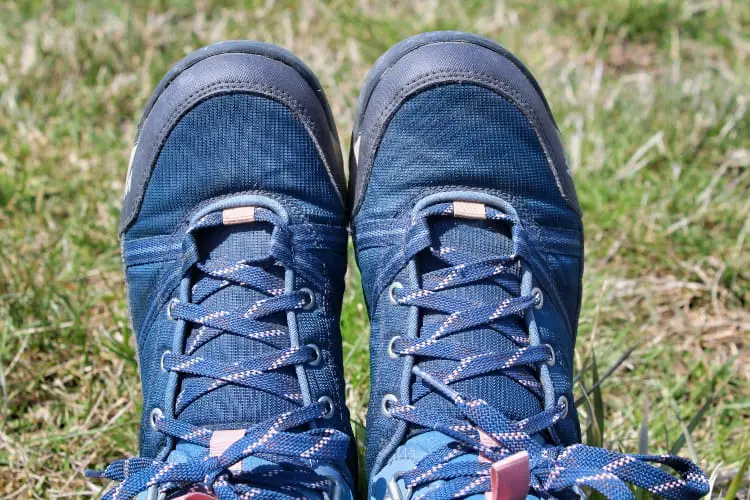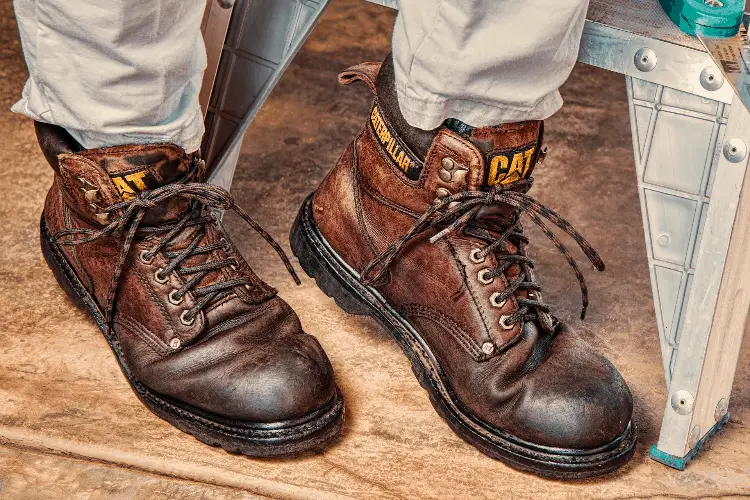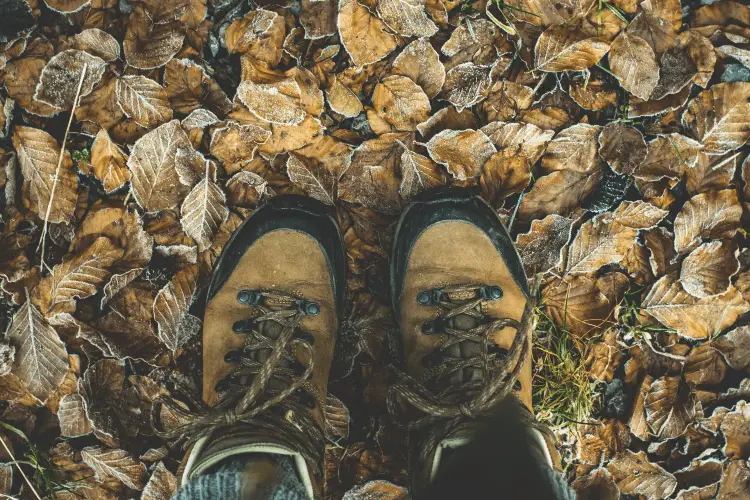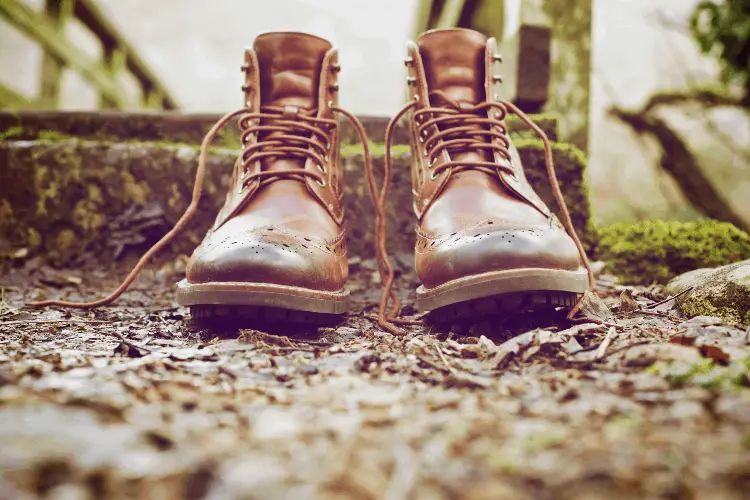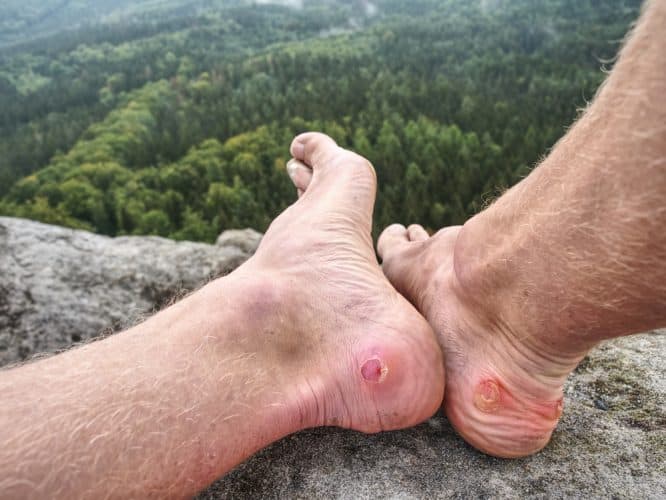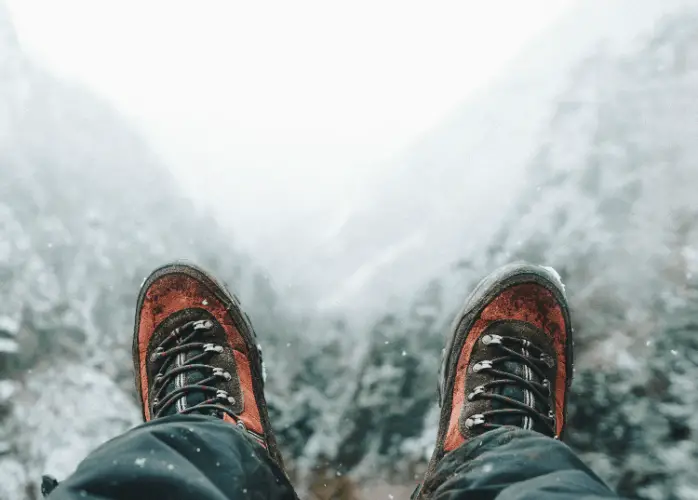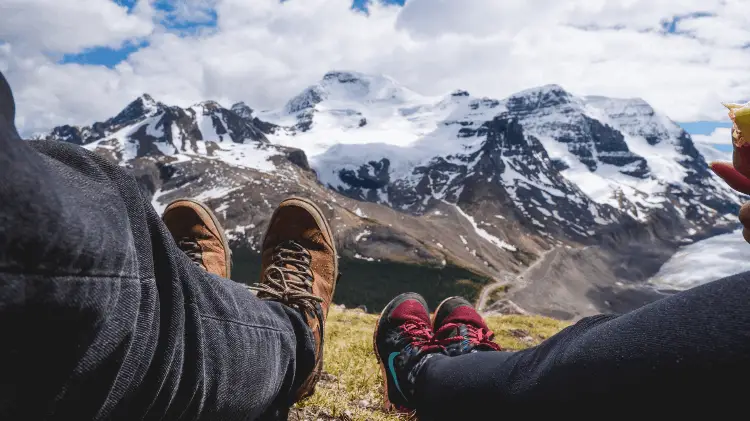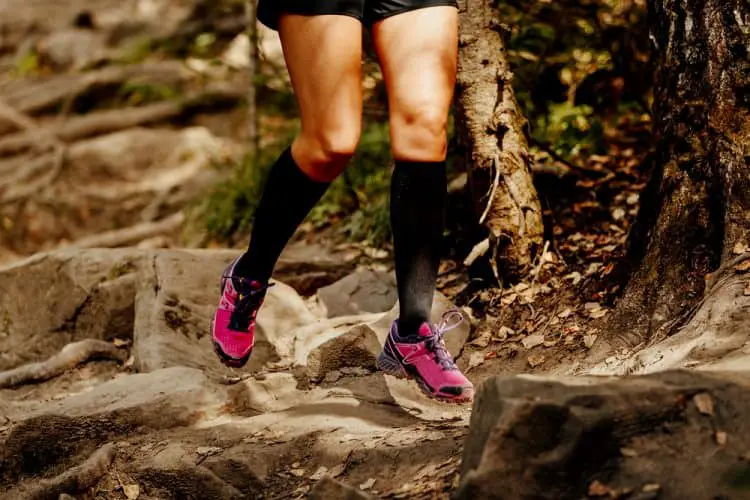How To Make Hiking Boots More Comfortable? (An Easy Guide)
When hiking, your feet are your vehicle, so your hiking boots are like tires. Just as you don’t want to be flying down the highway with low traction tires, you don’t want to have hiking boots that don’t perform well.
Of course, part of this is traction, but a big concern is foot comfort and support. Besides choosing the right hiking boots to start, you need to learn how to make hiking boots more comfortable.
In short, to make hiking boots more comfortable, you need to customize the fit, so that the boots fit your feet perfectly.
Me and my colleague Winston will show you the tricks that will have your feet happier after a day of hiking.
Lace-up and get ready for more hiking boot information than you knew you needed.
Let’s begin.
Why comfortable hiking boots matter?
Whether a short walk on a park path or a thru-hike of the Appalachian Trail, the overwhelming majority of your hiking will be upright on your feet. As such, your feet take the brunt of the punishment.
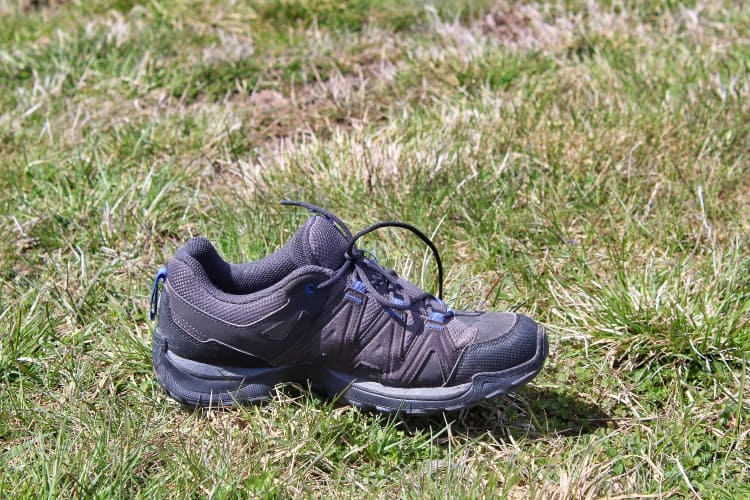
I love my Salomon Millstream 2 shoes. They are super comfortable and required little to no break in.
While humans didn't evolve with hiking boots on our feet, our modern lives have made us soft, so we need the protection that comes with good footwear.
Blisters, damaged toenails, plantar fasciitis, bone bruises, and twisted ankles are just the tip of the iceberg when it comes to injuries your feet can encounter.
Good footwear won't make it painless. But it can help mitigate a lot of the abuse your feet will take from miles of hiking on rugged terrain.
I keep saying good footwear, but what do I mean by that?
Truth is, to make your boots more comfortable, you need to have comfortable shoes in the first place.
They need to fit well to minimize discomfort and blisters, cushion the feet to reduce impacts, protect the feet from roots and rocks, and support the feet to reduce the risk of injury.
Good hiking boots will offer the following benefits:
- Traction
- Underfoot protection
- Ankle Support
- Cushion
- Toe protection
- Weather protection
Depending on where you hike and the time of year, different factors will be more important than others.
How to get the right hiking boots from the start
Before we think about optimizing the comfort of your hiking boots, let’s look at getting the best boot for your feet.
A hiking boot should feel comfortable right from the beginning. The same matters for any type of footwear, including hiking sandals.
Don't believe anyone who says that an uncomfortable boot just needs to be broken in. They should start comfortable and then get better.
When trying on boots, look for a firm fit in the heel, but adequate room for the toes.
It shouldn't pinch or rub anywhere. At the toe, you should have roughly a finger width of space, so your toes don't hit the front during downhills. When trying on boots, do them up snuggly and lightly kick the toe against a solid object to see if your toes hit the end.
Lunging steps forward, trying to simulate the forward momentum of downhill is another good way to make sure you have enough toe room.
During the day our feet swell, so it is wise to try on boots after work when your feet are at their largest.
Make sure you try them on with the hiking socks you plan to use. I've had many people try on boots with thin dress socks and not listen when I tell them they should go a half size bigger to make room for their socks.
A day or two later, they come back to the store to exchange with the next size up.
Be aware that companies build on different foot shapes called lasts. A Lowa boot will fit differently than a Keen will, so it's good to try different brands until you find the one that matches your foot shape.
Brand suggestions for various foot shapes
For wide toe box:
- "Keen" - Round toe box and wider than average
- "Merrell Moabs" - Comes in wide
- "Oboz" - Roomy toe box and comes in wide
- "Vasque" - Comes in wide
For narrow feet:
- "Vasque" - Comes in narrow
- "Lowa" - Even their wide is pretty narrow
- "Salewa" - Very narrow fit
For bunions:
- "Lowa" - They make bunion accommodating boots, but will probably have to be special ordered.
You will often find folks on the trail wearing Converse. Don’t do that. Even a magician couldn’t make those shoes comfortable for hiking.
Getting the right shoe size
Have your feet measured with a Brannock device at a shoe store. Get both your length and width measurements.
Have each foot measured, as it isn't uncommon for your feet to be different sizes.
Around 70% of the people have a bigger left foot by up to a full size. A quarter to half a size is the most common difference.
Once you have your foot measurements, write them down, so you know where to start when you go boot shopping.
When shopping for boots, get the size for your biggest foot. You can always snug down a boot that is a tiny bit big, but can't create space that isn't there.
How to make hiking boots more comfortable?
If your boots hurt your feet, then you may be out of luck, as there is only so much you can do to fine-tune them for your feet.
There are a few things you can do with stretching, lacing, and insoles but don't expect miracles if they aren't pretty comfortable to start with.
Your boots should be comfortable out of the box and get better as you break them in and customize the fit.
If your boots are full-grain leather, then you will have more latitude to shape them as leather stretches.
If your leather boots have a waterproof membrane like Gore-tex in them, their lack of stretch will limit how much your boots will stretch.
Synthetic upper boots will have less room to break them in, as the materials don't stretch as much.
Boots that are mostly one piece of leather that is shaped to the last have the most chance of changing or expanding the shape.
When boots are several smaller pieces stitched together, you will have less break-in room, as the stitching limits stretch.
What does breaking in a boot do?
Breaking in your boots does two things. The first is to stretch the boot slightly to better fit the shape of your foot.
Part of this is wearing in the movement pattern of how your foot moves when you walk.
Think of the boot as a rusty hinge. By walking in it, you are loosening up the stiff part where your foot flexes.
The other is to acclimatize your feet to the boots. We are incredibly adaptive creatures so when you get some miles in your new boots in a slow, progressive increase in miles that gets you used to the boots.
How to break in your new hiking boots fast?
This trick works well with leather boots that are one main piece. As we stated earlier, synthetic or boots with a lot of stitching won't mold to your feet nearly as much.
Take out the insoles and put your boots in an oven pre-heated to 120 degrees Fahrenheit (48 C) for 10 minutes. This temperature will be hot enough to open up the pores of the leather, but not hot enough to melt the rubber.
When you take them out, thoroughly coat them with mink oil to soften the leather.
Immediately put them on, lace them up tight, and go for an hour-long walk. Repeat the mink oil treatment and hour-walk every day for a week to get them ready for harder trail use.
Never go on a big hike the first time you wear new boots, as it will often be too much for your feet to handle.
How long does it take to break in hiking boots?
This will vary depending on the type of boot.
Synthetic boots such as “Salomon Quest 4D” will take a hike or two to get them ready.
Many modern boots that have a lot of synthetic materials and stitched panels are close to maximum comfort as soon as you take them out of the box.
Since the materials are less stiff than full-grain leather, they don't need to be softened up and shaped to your foot.
For full-grain leather boots, if you don't do the speed break-in technique shown above, you are looking at about 2 weeks of daily hikes to break them in.
Boots break-in quicker in warm weather, as your sweat will help soften the leather from the inside.
How to stretch the toe box of your hiking boots?
The laziest (and easiest) way is to let the time do its job. By simply walking in them, you apply pressure from the sides of your feet pushing.
A good trick is also to put a paper of newspaper in your shoes and leave it for 8-12 hours at least. With the time, that will stretch the fabric, thus creating more room for your toes.
If you want the toe box of your boot stretched more, then a visit to the professionals is the next option.
You can usually find a cobbler with the right tools and knowledge to stretch the toe box of your boots.
A cobbler is good to find, as this is who can put a new sole on your boots, extending the life of the boots you put so much effort into making comfortable.
They will soften the leather and then put in an expanding foot that can be adjusted to put pressure on the sides of the boot.
It is then left like this for a few days, allowing the leather to slowly stretch. You can usually get one width size wider.
They can also stretch in a localize spot if you have a condition like bunions, where you just need relief across the ball of the foot.
Improving the comfort of your boots with insoles
When people think of breaking in boots, it is the top and sides. However, all of your weight is on the bottom of your foot.
Most insoles that come with boots are with generic foam that add a little cushion if it does anything at all.
Most stock insoles are disposable.
They are flat with very little support. Some companies such as “Oboz” have a more supportive insole with their boots, but run into the issue that they only come in one level of arch support.
The bottom of our feet is shaped, and when you have an insole that matches that shape with the right combination of support and cushion, you will find your feet less sore at the end of a long day of hiking.
A good footbed will have arch support, a heel cup to stabilize the heel, and a cushion under the ball of the foot. If you have good medical benefits at work or don't care about price, then getting custom orthotics made can be the best option, as they are shaped to your foot.
Make sure you let the podiatrist know what you are using them for, as that may change how they design them for you.
To get a similar benefit at a lower cost, consider the “Sole” heat mouldable footbeds.
These insoles can be shaped to your feet by heating them in the oven and then putting them in your boots.
I've had great success with them personally in hiking boots. They have three different levels of cushion, which also changes how much volume they take up in your boots.
While not customizable, “Superfeet” insoles come in three different levels of arch support, so it kind of splits the difference.
Thinner than the other two options, I have used these with good results in boots that didn't have room for the Sole footbeds.
If you get pain or numbness in your feet, then adding metatarsal pads to the insole can help alleviate the pressure that is causing your issues.
These little stick-on foam pads sit behind your toes to help spread the bones of the foot with each step.
The nerve and blood flow for your feet goes between the metatarsal bones. If they are squeezed together for a prolonged period, it can lead to issues such as numbness, pain, or a burning sensation, cleverly called hot foot.
How to lace up your hiking boots for a comfortable fit
Boot lacing doesn't have to stay the way it came in the box. Several simple lacing tricks can improve the fit of your boots and make them more comfortable.
Below I have described the most common issues related to hiking boots fit and how to resolve them by using lacing techniques.
Tight in the toe box
Instead of crossing the laces across the forefoot, skip a couple of eyelets and run straight up on the same side.
Resume the x-pattern crosses a couple of eyelets up the instep. Play with spacing to find what pattern works best for your feet.
Slipping heels
To lock your heel in place, the simplest technique is to double wrap the laces where the top of the foot transitions to your shin. This is usually where the lacing hooks start on the boots.
Lace up your boots normally but before going to the hooks do wraps of the lace over the other lace.
Think of tying the shoe, but rather than over once you do it twice and don't tie the bow.
Then pull the laces tight. This puts pressure in line with the heel, pulling it to the back of the boot. Then proceed to finish lacing up the hooks of the boot.
The importance of the right hiking socks
Proper hiking socks offer a lot of benefits that will improve the comfort of your hiking boots:
- Cushion under the heel and toes
- Snug fit that reduces friction
- Wicking to keep feet dry
The best hiking socks are from “Darn Tough”.
Great fit, comfortable, tight weave for low friction, and very durable. They offer a lifetime warranty, so if you get a hole, you get new socks.
9 Tips to prevent blisters and enhance boot comfort
Blisters are the bane of the hiker, but with good footwear and smart foot care, you can virtually eliminate them from your life.
Blisters are caused by friction, so any way you can reduce friction will help.
- When you get new boots, go for a walk and note any spots that feel tight or get warm due to rubbing.
- Work to keep your feet dry as wet skin gets soft and soft skin gets torn up.
- Tighten your boots correctly to minimize rubbing
- Wear proper hiking socks
- Wear two thin pairs of socks so the socks rub against each other
- Wear toe sock liners if you are prone to blisters between your toes.
- Wherever you tend to get a blister, put a piece of duct tape over it before your hike. This way it rubs on tape, not your skin.
- A squirt of baby powder in your sock before you put them on. This reduces friction and helps keep your feet dry.
- Put on fresh dry socks at lunch or in the middle of your hike
Making boots more comfortable in different weather conditions
If you live in areas that get all four seasons, you won't get by with only one pair of boots.
Winter
Waterproof, insulated hiking boots that have room for thicker socks.
If it is only at freezing or slightly below, you may be able to use your regular hiking boots depending on how warm your feet are.
Wear gators to keep your feet warm and keep snow out.
Cold And Wet
When it is cold and wet out, think spring and fall, make sure you have waterproof-breathable boots to keep your feet dry.
Wear gators to keep the water out of the top of your boots.
Hot And Dry
We recommend against waterproof boots in hot, dry conditions like the desert.
Your feet will bake, and you'll get wet feet from sweat. Ventilated desert hiking boots are the best option if you need ankle support. Otherwise, vented hiking shoes are a great option to let your feet breathe.
Hot And Wet
In these conditions, I find waterproof boots just act as sweat boxes for my feet.
I wear ventilated, quick-drying shoes in these conditions as wet feet from the occasional dunk in a creek or rainfall is preferable to having my feet wet all the time from sweat.
Bring more socks to change into to keep your feet somewhat dry.What hiking boots are most comfortable
This is highly subjective, but having worked in an outdoor store for many years and done a lot of hiking myself, below are the boots that have the best track record for comfort.
Bear in mind that a great quality boot that is too narrow for your foot won't be comfortable.
You need to understand your own feet and test many boots to get the right one. This should help you get started with your quest for the perfect boot.
Most supportive boots
For the roughest terrain and folks with bad ankles and knees.
- Lowa Camino - Available in wide and medium. Full-grain leather option.
- Hanwag Tatra - Available in wide as well as regular width
- Vasque St. Elias - Available in narrow, medium, and wide
Medium Support
For general purposes hiking:
- Oboz Bridger - Medium and wide width. Comes with an arch support insole.
- Merrell Moab Mid - Medium and wide width. No break in needed.
- Keen Ridgeflex Boot - Roomy in the toes. Flex panel increases comfort.
Comfortable Hiking boot alternatives
Not all hiking calls for a high-top hiking boot.
Here are some options for conditions where a hiking boot isn't the right tool for the job.
For hot weather:
- "Altra Lone Peak 5" - Wide toe box and zero-drop make these trail running shoes a favorite among thru-hikers. Light, fast and quick drying.
For water:
- "Keen Thargee Sandals" - Hiking shoe bottom with a non-absorbent webbing sandal top to make shorelines and river hiking a breeze.
For rock scrambling:
Tall boots can be a hindrance when you are rock scrambling. Approach shoes are the best option here as they are great for hiking and give a good grip on the rock.
"La Sportiva TX2" or "Scarpa Mescalito" are great options. Make sure you try them on as you need a firm fit, so they don't slide around on your feet, but you still want them comfortable for long days of hiking.
Conclusion
If you want to have more fun and less pain when you hike, it is a smart idea to get good footwear and customize it for your feet.
While your hiking boot choice is important, you aren't done when you pick a boot. Break them in and customize them for your feet to maximize your enjoyment on the trail.
Plus, it will keep your feet from looking like a torn-up mess and hating hiking. It's supposed to be something we do for fun after all.
Winston Endall
Having worked in the outdoor, fitness, and cycling industry his whole life, Winston brings a wealth of real world knowledge on the topics. Rock climbing, backpacking, cycling and wilderness survival are his life. As both an athlete, coach and outdoor educator, his practical experience translates into his writing to help people better pursue their outdoor passions. Read more about Winston here.


